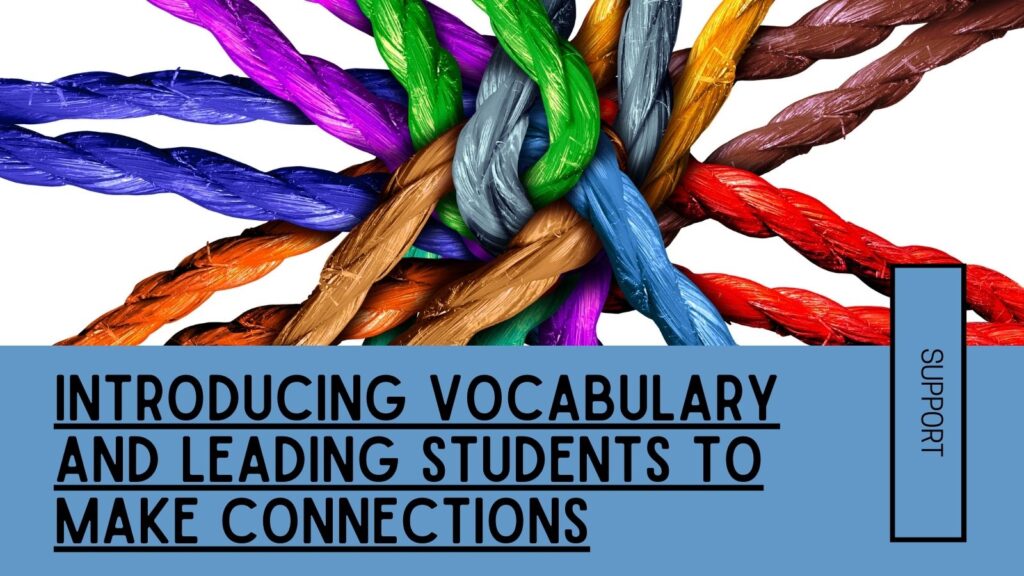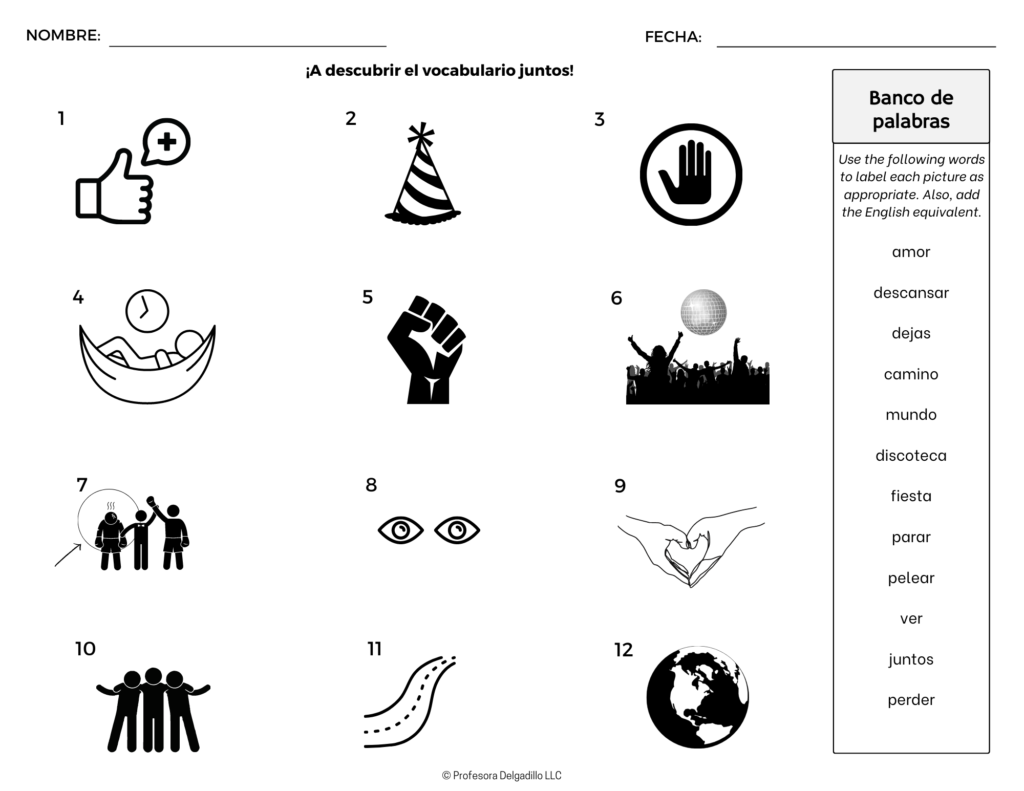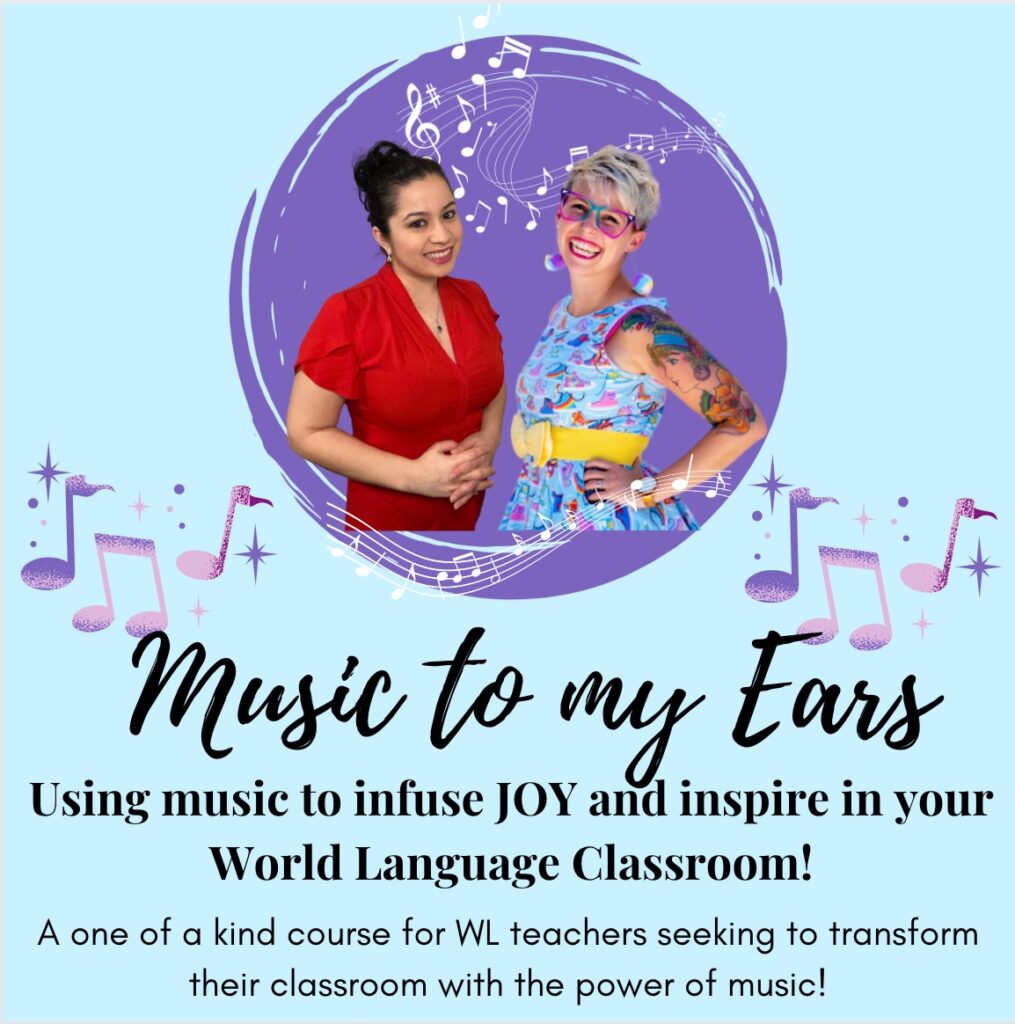There are tons of ways to introduce vocabulary to our learners and this blog post is not an all-inclusive list.
We already know that learners memorizing a vocabulary list doesn’t equal to learners actually being able to use this vocabulary in conversation or writing.
Now, I am not saying “don’t provide a Quizlet stack or vocab list” if that makes you and your learners happy.
Instead, what I AM saying is that we must create different opportunities for learners to process vocabulary and target structures.
Such opportunities can be created in a variety of ways such as:
- Guided vocabulary discovery and connections
- Personalized Questions & Answers
- Total Physical Response
- Total Physical Response through Storytelling
- Leverage cognates
- Comprehensible literacy activities
Of course, incidental vocabulary acquisition will also take place, but that is just an added bonus.
Today, we will focus on guided vocabulary discovery & TPR.
Guided Vocabulary Discovery
For this activity, you will need to set up a slide or document with the selected vocabulary. I try to mix words that my students may already know with new words in the song/story/article/etc that I want to highlight. I never have more than 20 words.
The following example comes from my activities for the World Cup 2020 Official Song HAYYA HAYYA Juntos es Mejor.
Before any song, story, or article, I create a document with a word bank that looks like this:
Instructions:
- Give learners 3-5 minutes so that they can make their own connections using what they already know. They are to match the word to the picture. They are also encouraged to write the translation (or not, up to you).
- Then, give learners 2-3 minutes to discuss with neighbors some of their answer as well as to exchange missing answers.
- Now, it is time for the teacher to project the slide and call on students to provide responses. If there are any gaps, the teacher must fill in. I have done this type of activity many times and usually there aren’t many gaps. While teacher is annotating the document, students are checking their answers.
Now, Easily Transition This Activity to TPR
Using that same slide, you can transition to a Total Physical Response activity.
With TPR (developed by Dr. James Asher), you basically create a connection between a gesture and a word. It is that simple!
Did you know that for years I thought TPR was so much more complicated than that? And it turns out, it isn’t. It is simple and super powerful in the Spanish classroom!!!
Again, using that same document, here are the instructions to transition from the first activity to TPR.
- Have your class stand up.
- Let your class know that they will all try the gestures.
- Point to the word #1 and ask your class to help you come up with a gesture to establish meaning for word #1. Select the best gesture and use that one from now on.
- Do the same for the rest of the words.
- Now, have learners play SIMON SAYS or La maestra dice using these new words. I learned about “La maestra dice” from La Maestra Loca.
You can also have a student volunteer do the gestures, play with partners, and even have a TPR tournament with the song!
Need More Ideas to Infuse Joy with Music in Your Classroom?
The ideas presented were just a few of our five hour self-paced course Music to My Ears.
This course includes all the activities, ideas, and strategies we use with our learners to teach with songs!!!
Don’t forget to use the code THANKYOU at checkout for $10 off! This offer expires on Sunday, Nov. 27th at 11:59 PM ET. |
If you would like to listen to a recap of this blog post in Spanish, the visit my video below.



